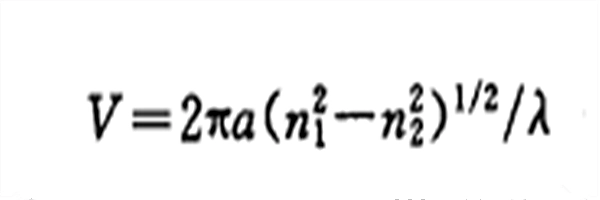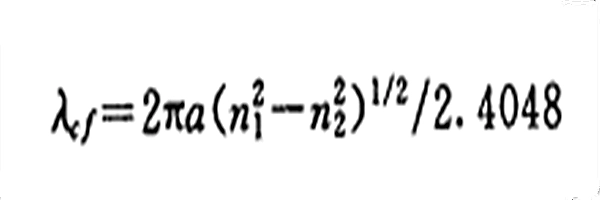The normal transmission mode of single-mode fiber is linear polarization mode, (including two orthogonal modes). The so-called cut-off wavelength refers to the cut-off wavelength of higher-order modes (including four degenerate modes composed of two circular polarization modes and two orthogonal modes). The operating wavelength of the single-mode optical fiber transmission system must be greater than the cut-off wavelength, otherwise, the optical fiber will work in the dual-mode area. Due to the existence of modes, mode noise and multi-mode dispersion will be generated, which will lead to the deterioration of transmission performance and the reduction of bandwidth. Figure 1 shows the eigenfunctions and curves of a single fiber, as well as the refractive index profile distribution. It can be seen from Figure 1 that the working area of a single-mode fiber is:
Normalized frequency

In the formula, a is the core radius, is the core and cladding refractive index, and λ is the working wavelength. V=2.4048 is the cut-off value of the modulus. When the structural parameters of the optical fiber are timed, the cut-off wavelength of the optical fiber is:



